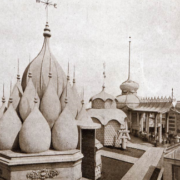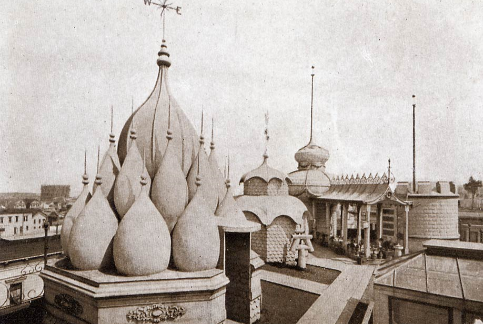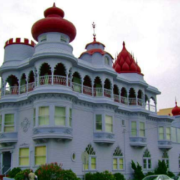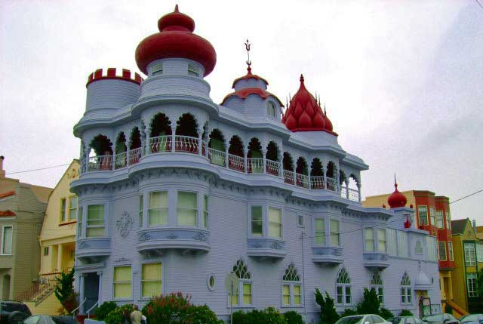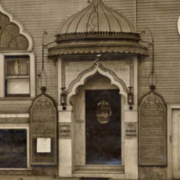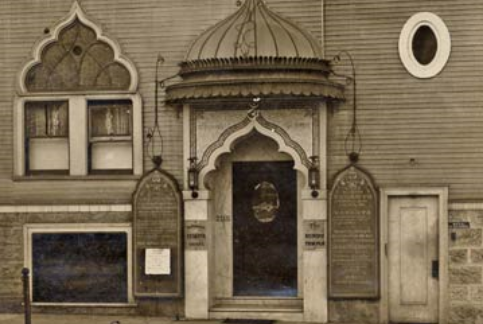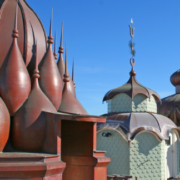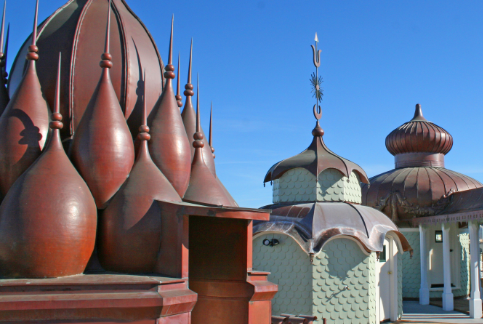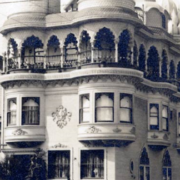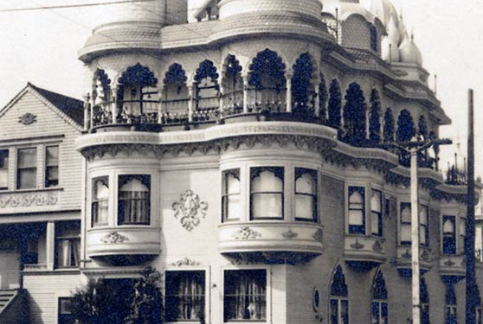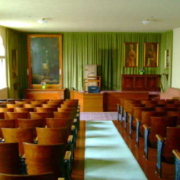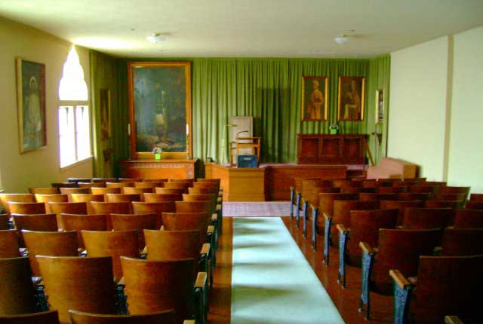Old Temple


LOCATION
2963 Webster Street
(Auditorium Entrance on Filbert Street)

Vedanta Scripture Class
By Swami Tattwamayananda
![]() Fridays,
Fridays, ![]() 7:30 p.m.
7:30 p.m.
Current text for the study is Bhagavad Gita
Friday Classes

Friday, 7:30 P.M.
Every Friday at 7:30 PM during the lecture season, Swami Tattwamayananda holds a class on Vedanta scriptures, emphasizing the traditional spiritual commentaries of great Vedanta teachers with the added insight of the modern teachers of the Ramakrishna-Vivekananda tradition.

Sunday School

Sundays, 11 a.m. to 12 noon

Classes are held for children in first grade through high school to give them a general knowledge of the universal truths of Vedanta, to acquaint then with the basic teachings of the major living religions, and to inspire reverence for the great religious teachers of the world.
After one simple worship and prayers from all faith traditions and a brief meditation, the children then divide according to age to study the world’s spiritual teachers and philosophies. The months of January to May are devoted primarily to rehearsals and other preparations for the Sunday school skit which is enacted during the Memorial Day Retreat at the Vedanta Retreat in Olema.
Old Temple
2963 Webster Street
(Entrance on Webster Street)
Old Temple Architecture

The Old Temple was designed by Swami Trigunatitananda with Joseph A. Leonard, architect, of the San Francisco and Suburban Home Building Society.
The first two stories were constructed in 1905, and in 1908 the temple was completed with the addition of the third floor and towers.
Except for the lobated arched windows of the ground floor, the first two floors, with their bowed windows and cornices above at the front, and overhanging bay windows on the side of the frame building, represent typical turn-of-the-century architecture. The main entrance, on Webster Street, is recessed behind Ionic columns which frame the covered entryway. The 112-person auditorium and various offices comprise the first floor; the second and third floors were occupied by the monastery of the Vedanta Society for many decades.
On the third floor, Moorish columns rise from a Doric base to support cusped Mogul arches forming the arcaded balcony. On the southeast corner of the building there is a crenelated European castle tower and at the northeast corner a double bulb-shaped dome on a round tower after the style of old-fashioned Bengal temples. Next along the north side is an octagonal two-stage dome adapted from the style of the Shiva temples at Dakshineswar, Bengal; beyond which is a cluster of pointed domes exactly representing in miniature a temple of Benares; and finally a dome in the style of the Taj Mahal.
The various towers, typically Indian, Mogul, and Western, are intended to symbolize the harmony of all religions and the pointed arches and domes the upward aspiration of the spiritual seeker. Rising from an unadorned clapboard base to projections of bay windows, rich cornices and overhanging balconies, the building represents a striking profile of towers, domes, and pinnacles.
See an in-depth article Architecture and World Making: Production of Sacred Space in San Francisco’s Vedanta Temple in “South Asian History and Culture”: http://www.tandfonline.com/doi/full/10.1080/19472498.2011.531611
Old Temple Paintings

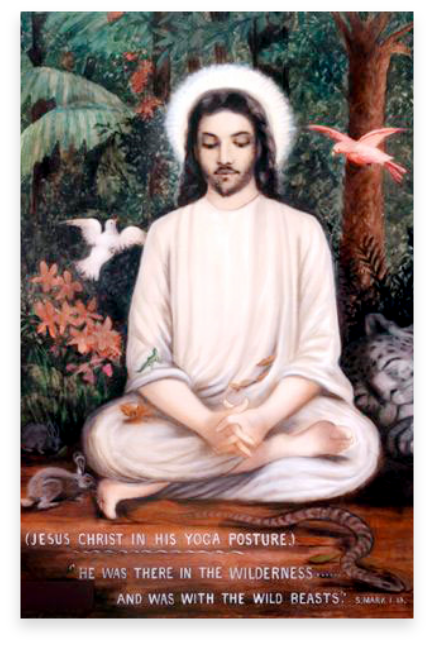
Jesus Christ in Yoga Posture
“A painting of Jesus Christ sitting in yoga posture in the wilderness, with a rabbit, two doves, a tiger, and a snake at their ease around him…” was made by a Mrs. Eugene (Theodosia) Oliver, who, according to her diary, first came to the Vedanta Society in February of 1908. It was completed in September of 1908, and Swami Trigunatita, who was pleased with it, saw to it that Mrs. Oliver had it copyrighted; he then bought the copyright from her for twenty-five dollars, which in those days was a fair sum. (Prints of the painting were sold at the Hindu Temple for prices ranging from one dollar and a half to fifty cents, according to size.) In November 1908, the painting was framed and installed in the Temple,” where it hangs to this day.
—Sister Gargi (Marie Louise Burke)
Swami Trigunatita: His Life and Work
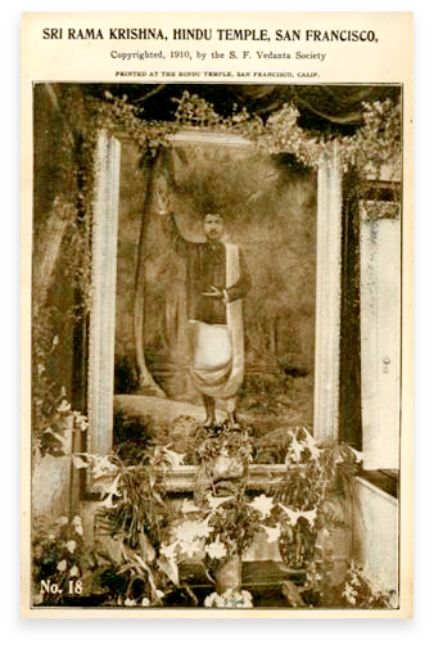
Painting of Sri Ramakrishna
Mrs. Albert (Claudina) Wollberg painted the portrait of Sri Ramakrishna, working under the direction of Swami Trigunatita in 1908. The swami would often go to the Wollberg’s home in Pacific Heights (a posh district of San Francisco) to supervise the painting as it progressed. The large oil painting of Sri Ramakrishna [which was formerly canopied], standing with one hand raised, is the same pose as in the photograph taken at the home of Keshab Chandra Sen. The original painting hangs on the east wall, above the altar to the left of the main platform, as it did during Swami Trigunatita’s time.
—Excerpts from Sister Gargi’s
Swami Trigunatita: His Life and Work
Historical and Present Photo Gallery


 Streaming
Streaming
